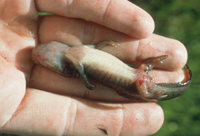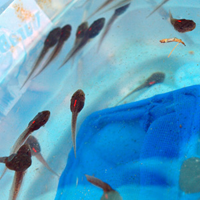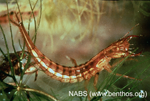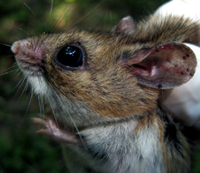Ecology of amphibian pathogens

A tiger salamander larva showing signs of ranvirus infection.
Ranaviruses are emerging pathogens of cold-blooded vertebrates, including amphibians. Ranavirus epidemics decimate amphibians in natural populations and aquaculture and have recently been linked to amphibian declines in Europe. In much of the world it is unclear whether these viruses present a significant conservation risk or are a more-or-less "normal" part of the communities. What is alarmingly clear, though, is that the number of reports, their geographic and taxonomic distribution, and their movement around the world in trade are all growing.
We are thus actively and passively (see the sample submission page) looking for more instances of ranavirus in new hosts and locations. We are part of a larger effort to map the distribution of ranaviruses around the world, the Global Ranavirus Reporting System. In addition, we and our colleagues have recently sequenced several dozen ranavirus isolates. We are beginning to sketch out the phylogeography of one "species" of ranaviruses, the FV3-like viruses, to determine whether there are a few wide-spread ranaviruses or many local types and what can be learned from their evolutionary history (e.g., patterns of spread). Genetic tools may also help us map the spread and introduction of novel viruses into new locations or hosts and document the consequences.
Chronic infections. In a slightly different vein, we have documented a surprisingly high prevalence of low-level, chronic infections among adult wood frogs returning to ponds. We suspect that such chronic infections may be critical to the long-term persistence of ranaviruses within highly seasonal populations. We are working to explore both the causes and consequences of chronic infections in amphibians.
Environmental DNA and other non-lethal methods of surveillance. Lastly, we have been spending a great deal of time developing and evaluating methods for detecting ranavirus in different settings (the laboratory, zoos and aquariums, international trade, wild populations), with a focus on non-lethal methods. In particular we have been working to establish how (and how well) we can detect ranavirus DNA that has been shed into the environment (eDNA). This offers the promise of rapid, low cost, non-invasive, and sensitive detection of ranaviruses (and other pathogens) in aquatic environments. This work has been funded by the American Association of Zoo Veterinarians and the Association of Zoos and Aquariums./p>




